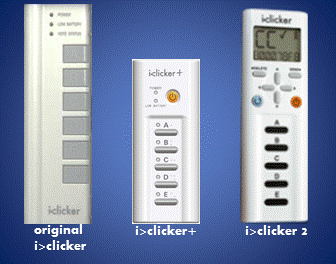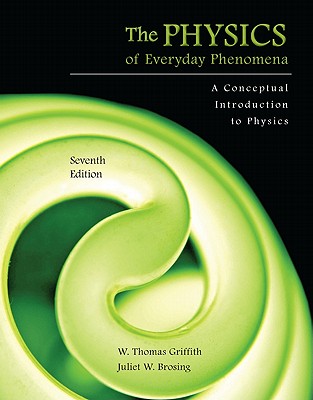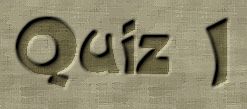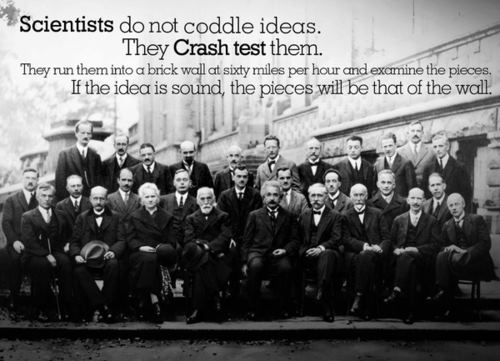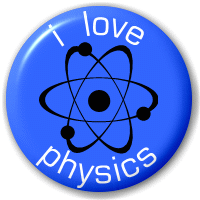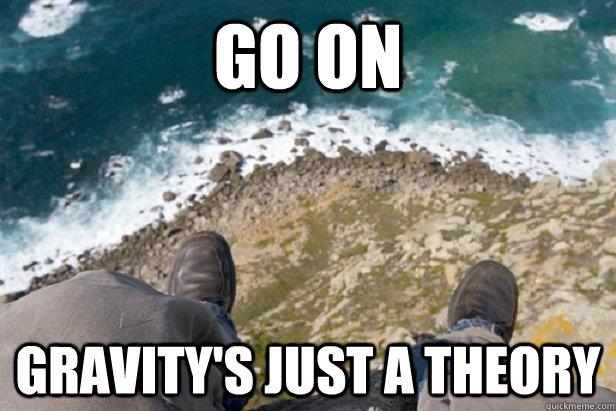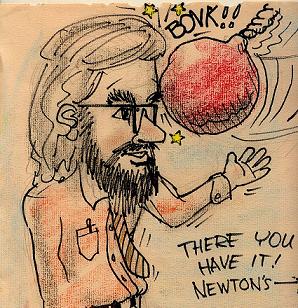 |
Prof. Rory Coker Office: RLM 8.312 Phone: (512) 471-5194 Fax: (512) 471-9637 Email: rory coker's gmail, coker's physics department mail Office Hours: Summer 2013, Tuesdays and Thursdays, 9 to 10 AM in RLM 8.312; also Wednesdays at 12 to 1 PM in the same room. |
|
The Summer 2013 unique number is 92670; the class meets every weekday at 2:30 PM in Pai 2.48. Attendance is REQUIRED in class, and the roll will be checked each day using iClickers. Text: THE PHYSICS OF EVERYDAY
PHENOMENA, by Griffith and Brosing, 7th ed.,
(McGraw Hill, 2012).
ATTENDANCE IS CHECKED in courses taught in the College of Natural Sciences using devices called iClickers. If you have previously taken a science course here at UT you probably already have a clicker. If not, they are readily available, new or used. Your clicker must be registered specifically for this course and unique number, on Quest, or it will not record you as present in class. When you log onto Quest, you can register your clicker using its serial number. If you have a used clicker and the serial number is worn off, consult the clicker FAQ on Quest to learn how to create a new serial number. The homework for this course is handled by the
Quest on-line homework service. Homework
assignments are turned in by you on-line from your
computer or smart-phone web-browser, logging-in with
your UT-EID from https://quest.cns.utexas.edu/.
An FAQ page is available
here. Complete homework and quiz solutions
are available on Quest within 15 minutes or half an
hour after the deadline. Since
Fall 2011, Quest has required
a $25 charge per student for its use, which goes
toward the maintenance and operation of the
resource. After the 12th day of class, when you log
into Quest you will be asked to pay via credit card
on a secure payment site. You have the option to
wait up to 30 days to pay while still continuing to
use Quest for your assignments. If you are taking
more than one course using Quest, you will not be
charged more than $50/semester. For payment
questions, email Quest
Fees. RUNNING TABLE OF HOMEWORK DUE DATES AND TIMES: NOTE: Although it is mentioned at least once a week in class, about half the class doesn't seem to realize that all homework and quiz questions are based squarely on material presented in class lectures. Your only effective study resource is a good and complete set of class notes, with all missing steps filled in and worked out by you.
Here is a way to get extra credit! Test your knowledge of science. Here is a quiz concocted by the Pew Foundation with the Smithsonian Institute. Anyone with a 5th grade education should be able to answer all 13 questions correctly, but in fact only 7% of the US population can do that! Only 50% of the population could answer 8 or more questions. Take this as a fair test. Here it is. How did you do? If you missed more than 2 or 3 of the questions, that is a very, very bad sign concerning the quality of your education to date! COACHES AND TUTORS: Coaches are present at tables by the elevators on the 5th level of RLM, at various times between 9 AM and 5 PM weekdays. Coaches are there to give you hints on homework problems, and mini-lectures on key concepts in physics. You can obtain a physics graduate student tutor by contacting the undergraduate secretary, whose office is around the corner from the coaching tables on the 5th level. If you are experiencing any difficulties in doing the homework you probably need a tutor, and you would need to work with him or her beginning as early as possible in the semester. Note that free tutoring is available here. CLASS SLIDES: Warming!, Ch. 1, Motion, Vectors 1, Vectors 2, Estimating Acceleration, Ch. 2, Kinematics, Free Fall, Ch. 3, Projectiles, Projectile Relativity, Centripetal Acceleration, Radial and Tangential, Relative velocity, All Three Laws, The Dark! Friction, Roller Coaster, Conical Pendulum, Work, Energy's Fathers, Kinetic Energy, PE and E, Conservative forces, Drawing the PE, CE and Mass, Deuteron, Then and Now, Satellites, Planet Men! Orbits, Earth's Orbit, Dark Matters, Gravitational Potential Energy, SHO, Center of Mass, Geometrical Center, Stability, Equilibrium, Total Momentum, CM and Orbits, Impulse! Elastic and Inelastic Collisions, Where is it? Angular Velocity, Rotational Inertia, Rotational KE, Torque, Rolling, Rotational Inertia Race, Angular Momentum, Torque and Angular Momentum, Precession, Stable and Unstable Rotations, Statics, Pressure, Pascal Principle, Buoyancy, Bernoulli Principle, Fathers of fluid physics Heat! Engines. When physics lecture demonstrations go wild. How to open a corked bottle of wine with just your shoe and a wall. PHYSICS JAVA APPLETS are computer programs running animated diagrams. The animation will show you how various quantities are related in various important examples in basic physics. The programs will often do specific numerical calculations for specific cases, if you input the specific numbers. In some cases the applet runs in a popup window, so that if you have your browser set to disable pop-ups, the applet may not appear. Here are some general collections of [sometimes very good] applets: http://lectureonline.cl.msu.edu/~mmp/applist/applets.htm Single-concept video tutorials on basic physics. SOME SPECIFIC APPLETS---
|
||||||||||||
| qu |

Galileo |
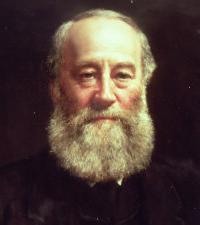
James Joule |
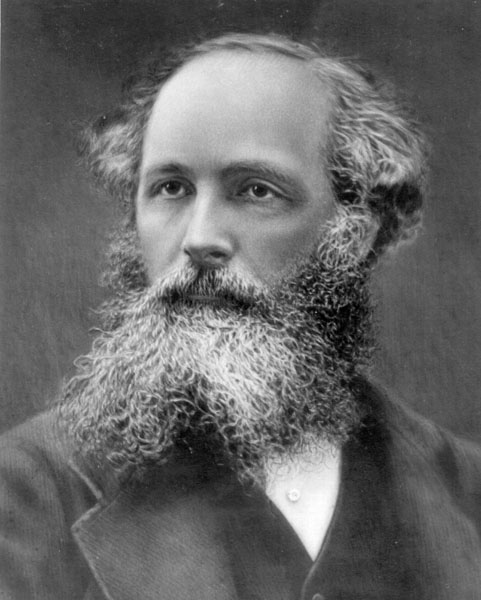
James Clerk Maxwell |
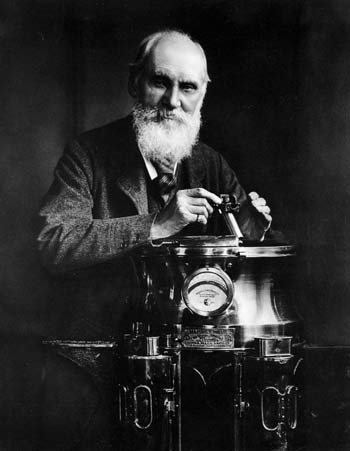
Lord Kelvin |

There will be times when your situation seems desperate and completely hopeless. But there is always hope, unless you suddenly hear Fatso Schmidt, the Keyboard Cat, playing you off! Click on Fatso's image to see what “no hope” really means!!
